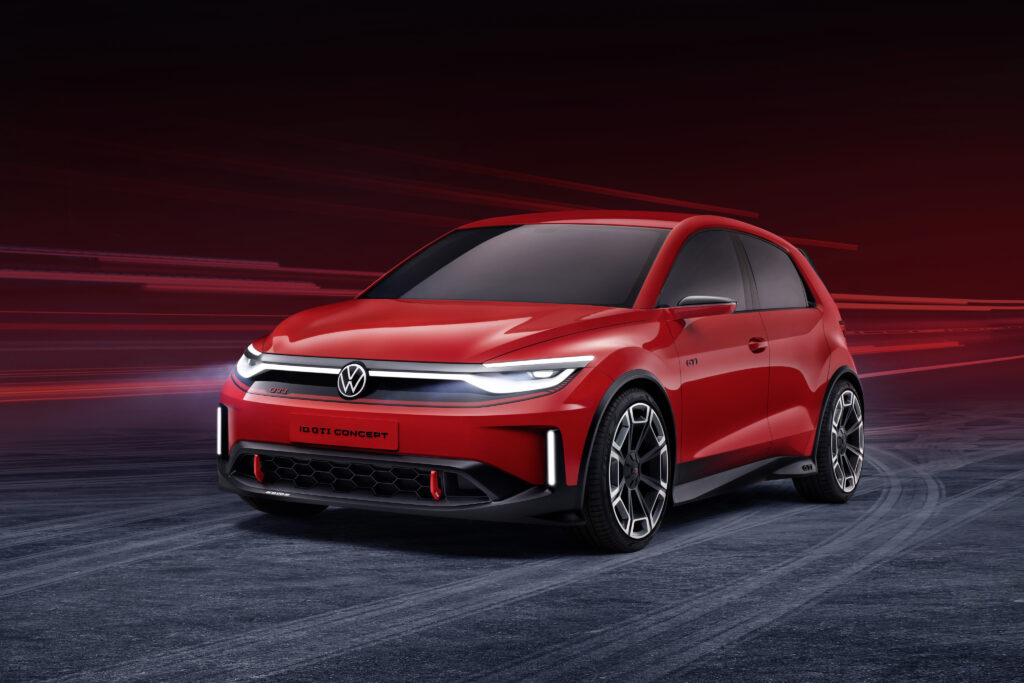
Volkswagen (VOW3.DE), once synonymous with iconic models like the Beetle and the Golf, finds itself at a crossroads. Despite its ambitious push into the EV market with the ID lineup, the brand has struggled to recapture its former glory.
The much-anticipated Project Trinity was supposed to be the centerpiece of VW’s resurgence, promising cutting-edge technology and Level 4 self-driving capabilities. However, delays have plagued the project, as VW shifts its focus to an electrified Golf and a new partnership with Rivian (RIVN), which promises to redefine its technological foundation.
What’s the Holdup?
The delays surrounding Project Trinity are not just about shifting priorities—they represent a deeper strategic pivot. According to Volkswagen CEO Thomas Schäfer, the brand’s decision to postpone Trinity stems from its desire to make a bigger splash with its new technology. At the heart of this pivot is a $5 billion joint venture with Rivian, aimed at revolutionizing VW’s software and electric architecture.

During a recent media roundtable, Schäfer explained that the company is charting a deliberate path forward. Instead of debuting Rivian’s Software-Defined Vehicle (SDV) architecture on a niche product like Trinity, VW plans to launch it with the Golf EV, a universally loved model that is far less risky.
This move allows VW to test the waters with a product that has broad appeal, ensuring that the rollout of this groundbreaking technology is met with success.
Rivian Partnership: A New Foundation
Volkswagen’s partnership with Rivian signals a seismic shift in its approach to vehicle design. The joint venture focuses on creating a Software-Defined Vehicle architecture—a transformative framework that prioritizes software as the core of the vehicle’s design rather than an afterthought.
This architecture will not only underpin the Golf EV but also extend to the broader VW family, including luxury brands like Porsche and Audi.

Porsche and Audi are expected to be the first to incorporate this new technology, with launches as early as 2027. By starting with high-end brands, VW aims to refine the platform before introducing it to the mass market. This approach ensures that when the technology does trickle down to more accessible models, it is both reliable and refined.
The New Timeline for Trinity
Initially slated for a 2026 release, Project Trinity is now pushed back to 2032 or later. Far from being a high-volume vehicle, Trinity is positioned as a flagship, low-production model that showcases Volkswagen’s technological prowess. This strategy evokes comparisons to the Phaeton, VW’s luxury sedan that prioritized innovation over mass appeal.

Volkswagen has made it clear that Trinity will remain a bespoke offering, complete with advanced features like Level 4 autonomy and Rivian’s SDV platform. While this exclusivity may enhance its prestige, it raises questions about whether such a niche product is what VW needs to regain its foothold in the EV market.
Schäfer himself acknowledged that Trinity was “never designed as a volume vehicle,” a decision that may limit its impact despite its technological significance.
Why the Golf EV Comes First
Choosing the Golf EV to debut Rivian’s technology is more than just a safe bet; it’s a strategic masterstroke. As one of VW’s most iconic models, the Golf has a broad and loyal fan base, making it the ideal platform for introducing cutting-edge features. The Golf EV is set to launch in 2029, providing a bridge between VW’s storied past and its ambitious EV future.

This decision reflects a broader industry trend of introducing experimental technologies in flagship or iconic models before expanding them to the full lineup. For Volkswagen, the Golf EV represents a chance to reestablish its reputation for innovation while ensuring the success of Rivian’s SDV architecture.
The Bigger Picture: Can VW Regain Its Mojo?
The fate of Volkswagen’s EV strategy hinges on its ability to execute these ambitious plans. While the delays surrounding Project Trinity may frustrate enthusiasts, they could ultimately benefit VW by allowing the company to perfect its SDV platform.
By prioritizing the Golf EV, VW is signaling a commitment to its core audience while laying the groundwork for a more unified and innovative vehicle lineup.

Trinity, though delayed, still holds significant promise. Its success could serve as a beacon for the brand, demonstrating VW’s ability to compete with the likes of Tesla (TSLA) and other industry leaders. Whether it achieves its lofty goals remains uncertain, but what’s clear is that Volkswagen is no longer just building cars—it’s building its future.
Charge Complete
Volkswagen’s strategy for Project Trinity reflects a careful balancing act between ambition and pragmatism. By leveraging its partnership with Rivian and focusing first on the iconic Golf EV, VW is aiming to solidify its technological foundation while reconnecting with its audience.

Trinity may be years away, but its potential to redefine the brand—and the EV market—remains undeniable. The road ahead may be long, but for Volkswagen, it’s a journey worth taking.




